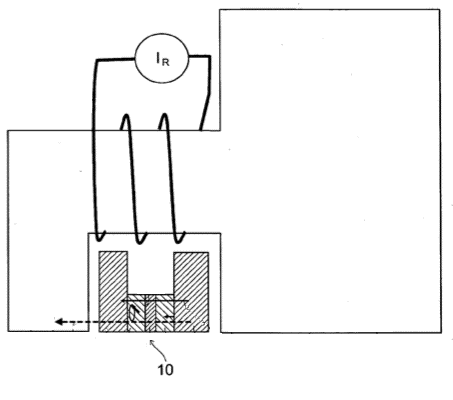Microwave-assisted recording: 6 TB in a notebook?

Spin torque head sounds like the hangover from a long night of clubbing, but it could be the technology that brings Heat Assisted Magnetic Recording (HAMR) to the masses. And 6-8x denser disk drives. 6 TB in a notebook? Wow.
High density architecture The key to higher capacity disks is areal density. The 1st hard disk drive - the IBM RAMAC - shipped in 1956 with an areal density of 2,000 bits per inch2. Today's drives are over 300 million times that.
But the current technologies are running out of gas. It's been clear for some time - see Engineering the 10 TB notebook drive for an excellent summary - that a new tech gestalt is needed: patterned media and heat assisted magnetic recording (HAMR).
The latter uses the fact that if a hot material is magnetized and then cooled, it retains its magnetic orientation much more strongly. As magnetic grain sizes continue to shrink, HAMR is needed to retain data despite stray magnetic fields.
Microwaved data on a platter: steaming hot That's the theory, but moving from the lab to economically building a billion HAMR heads a year is the hard part. Much research focused on laser heating, but there's more than one way to heat materials.
Last month Hitachi Global Storage Technologies - that includes IBM's former disk operations - and Japan's NEDO announced microwave-assisted HAMR. Simulations suggest the technology can scale down to 3 Tb/in2, 6-8x current disk densities.
Using a magnetic head-mountable spin torque oscillator researchers have achieved 10 GHz frequencies. According to the press release:
An electric current flow across a magnetic multilayer composed of a free magnetic layer and fixed magnetization direction layers results in a polarized electronic spin flow from the fixed layer to the free layer. Under suitable conditions, the magnetization of the free layer turns simultaneously due to the generated torque from the spin flow.
In a patent application last year, Toshiba researchers Katsuhiko Koui, Mariko Shimizu and Kenichiro Yamada, showed how a spin torque oscillator (cross-hatched area labeled 10) could be built into a read/write head:
Assuming the device can be manufactured economically - i.e. using current techniques - we could see spin torque drives in 3-5 years.
The Storage Bits take Microwave HAMR is independent of the patterned media problem. Combined they'll take us beyond the 10 TB 2.5" drive I wrote about 3 years ago.
While the densities are impressive - chip feature sizes are much larger - the I/Os per gigabyte metric will continue to decline. Meaning disks look more like tape all the time.
But as we further exploit non-volatile solid-state storage - NAND flash today and ??? tomorrow - large capacity disks I/O issues are less of a problem. In short, we'll be using disk drives for decades to come.
Comments welcome, of course. Thanks to Storage Newsletter for turning me on to this work.
